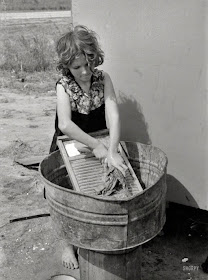General
LeMay expressed surprised at using the atomic bomb against the Japanese
as he felt no military targets remained – his incendiary bombing had
already destroyed nearly everything. The use of it is explained by
Truman’s desire “that the [atomic] bomb would provide diplomatic
benefits by making the Soviets more tractable” in postwar negotiations.
--Bernhard Thuersam
Incendiary Raids on Japanese Cities
“Army
Air Force General Curtis LeMay ordered the American strategic bombers
to begin night incendiary raids on Japanese cities rather than
attempting daylight precision bombing of industrial centers. The [B-29]
Superfortresses honed their skills in three raids against Tokyo. A
single bombing raid in February [1945] destroyed at least 25,000
buildings. But the most devastation attack of the war, more deadly
perhaps than both atomic bombs together, occurred on March 9, 1945.
Two
hundred seventy-nine Superfortresses, sortieing from Guam, Saipan and
Tinian, dropped firebombs from 7,000 feet on Tokyo’s residential areas.
The paper and wood city erupted in inescapable flames. Sixteen square
miles were completely destroyed.
During
this single raid, approximately 100,000 Japanese civilians were killed.
Many died from being scalded as they tried to save themselves by
crowding into the city’s canals, which boiled. By comparison, 100,000
civilians died in the Hiroshima nuclear attack, while 35,000 died at
Nagasaki. The raid lasted three hours. American Superfortress pilots
and crews in the last wave vomited in their aircraft from the stench of
burning flesh carried to their mile-high altitude.
Over
successive days, the B-29s progressed to other Japanese cities. The
United States burned Nagoya, Osaka, Yokohama, then Kobe. Then the
bombers moved on to the lesser cities. As Japan had few [anti-aircraft]
guns left, the B-29s could strike with impunity.
Citizens
were warned with leaflets that their neighborhood would be razed. But
few had anywhere to go. By the end of the war, nearly 400,000 Japanese
civilians would be killed, mostly in American bombing attacks.
[From]
April 1 until mid-June 1945, less than three divisions of Japanese held
out in Okinawa, without support….Fourteen Japanese divisions and
five….brigades protected Kyushu. President Truman later claimed, and
many American sources agreed, that an invasion of Japan could have cost a
million American casualties. This is far from accurate.
General
Dwight Eisenhower said that he felt that the atomic bombing was
unnecessary from the point of view of saving American lives. Admiral
William Leahy, Secretary of War Henry Stimson, Secretary of the Navy
James Forrestal, and Army Air General Henry “Hap” Arnold, all thought
that dropping the bomb was unnecessary. Japan was broken and would have
surrendered without an invasion.
The
Japanese had no fuel, fewer than 10,000 trucks, almost no ability to
manufacture weapons or ammunition, nor to transport supplies to Japan.
They had almost no tanks left and remained wholly unable to defend
themselves from air attack. Famine and disease threatened most of the
population. Millions of Japanese civilians remained homeless. One by
one, their cities were being razed. Japan’s air forces had been ruined,
her navy wrecked. The bulk of Japan’s army was withering away in South
Asia.
Nevertheless,
on August 6, the first atomic bomb, dubbed “Little Boy,” was dropped on
Hiroshima. [Three days] after that, the second atomic bomb, “Fat Man,”
was detonated over Nagasaki.”
(Danger’s Hour, The Story of the USS Bunker Hill, Maxwell Taylor Kennedy, Simon & Schuster, 2008, pp. 195-196; page 443)





